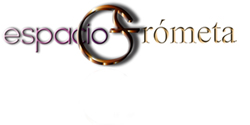THE TALENT OF THE BIFURCATIONS
David Mateo
Cuban Art Critic.
By force of seeming fortunate in opportunities, a bit discordant, the step from figuration to abstraction in Gilberto Frometa's work evident a series of specificities that lean much more toward the perception of the unit than toward the divergence. In fact, this is a determination that the artist has not adopted in an excluding way, but complementary, and neither contradicts all that we have already discovered around his personality, the active spirit with which he has been alternating from one topic to another, a technique to another. His is by nature a typical case of fluctuation, by temperament, in which disappear all those other conditions that so fragilely justify the selection of representative means in some of our creators
In his drawings, engravings, and paintings of more veracity, I have always perceived an escape notion, of detachment that I see also reappear through the abstractions for some years, but now maybe with a little more ease. It was the hyperrealist delineation, which provided him with the necessary instrumental to capture in images the diverse signs of that notion, or still better, to force it in its visual transcendence up to the detail level, the thoroughness. In that process he conceived a group of works that legitimated him inside the Cuban contemporary plastic art, but none of them ended up being as sophisticated as the series of horses galloping, or in rest, carried out with ink and pen nib. Starting from the seventies of the past century in which he made a true profusion of virtuosity, simulating contortions or lengthening in the physiognomy of the animal, showing the tense or dilation of the muscles, and even reproducing with impressive authenticity the fright and challenge of their look
However, the drawing seemed in occasions too suspended in its physical limits, in its accuracy; it lacked the stampede of colors, the free line, the force and spontaneity of the gesture. Intruding exactly in the abstract expressionism, starting from the eighties, FrĂłmeta found an alternative to liberate in a sudden way the whims of his interior jurisdiction. - Dictations, to my way of seeing, much more by the melancholy than by the drama -, and to rehearse different types of textures and composition planes, to regulate the warmth and indifference of color, to achieve through mixtures, of impasting, those tones and values that better adapted to the energy of its atmospheres... In addition, arrived to this phase, to this point of the bifurcations in his career, I don't conceive to avoid the query: How much won't have evoked the spirit of that almost deluxe binomial then, formed by the masters Servando Cabrera and Antonia Eiriz, with which he shared his student years?
In the achievement of each one of these expressive means for separate, Frometa ends up reaching such a sufficiency grade that for moments the resonances, the possible subordinations are diluted. Even when there is always somebody that - knowing him well in his desire for experimentation - dares to predict the arguments that gave origin to each artifice, to each effect used by him.
However, I lean for those pieces where the figurative and the abstract converge. In them the artist rounds, perfects the sensation of the inherent in movement, conquers the definitive tint of his atmospheres, creates new ways that make commendable the composition design, the placement of any object or figure (for much anachronism that these seem); and mainly, condenses the dialogue that can be generated among them. The Universe FrĂłmeta also crystallizes here in multiple allegories, where the vestige of the human thing becomes apparent. The animal continues having an important, almost protagonist presence; but the total interpretation of the painting in which this is integrated, is achieved starting from the counterpointing of symbols; symbols that reflect the conflict among the logic and the absurd, the rational and the irrational, the contention and the vehemence. Opposing senses that talk about life and about itself.





